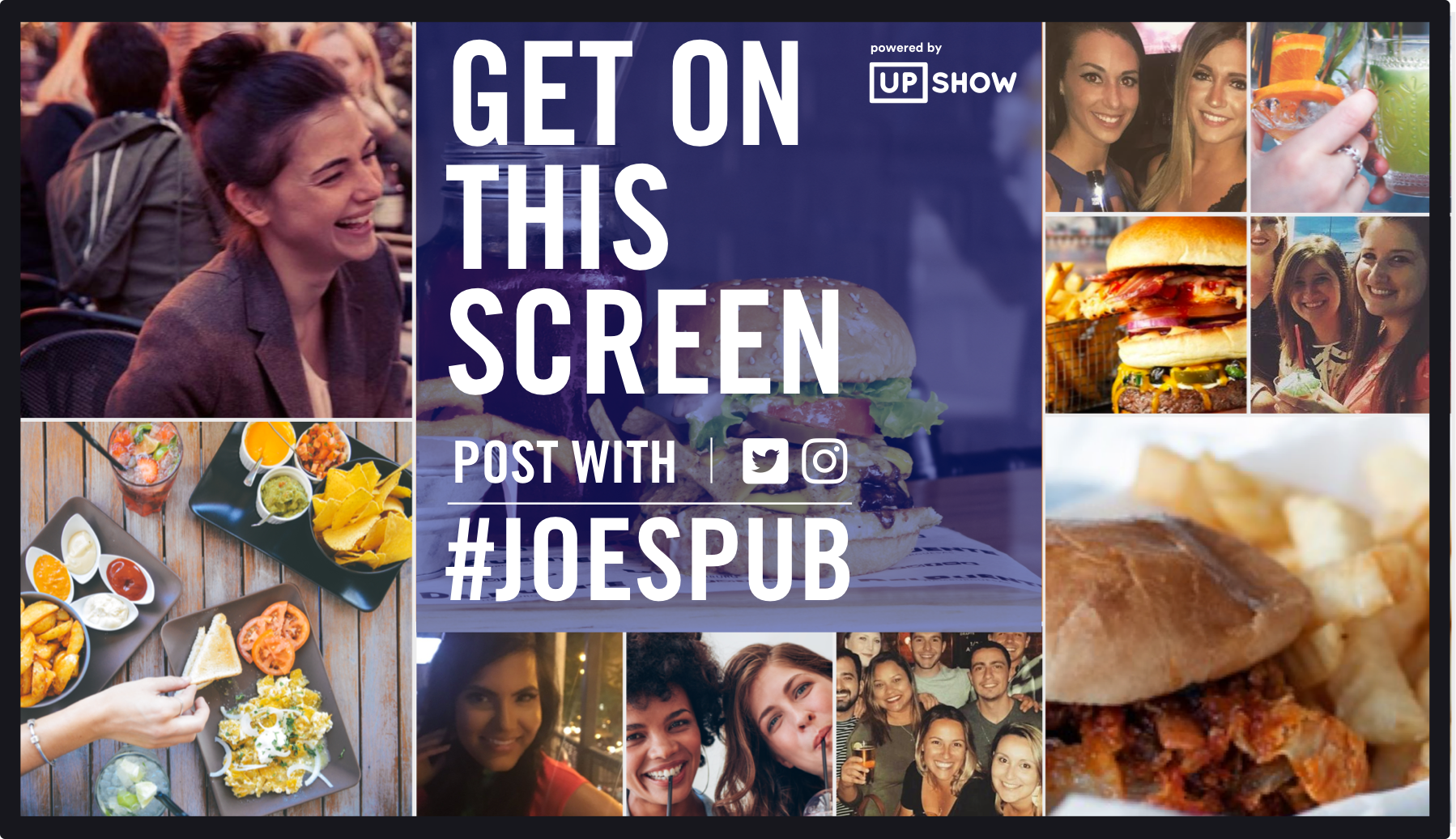
12+ Tools For Using Social Media On Digital Signage Screens
June 22, 2016 by Dave Haynes
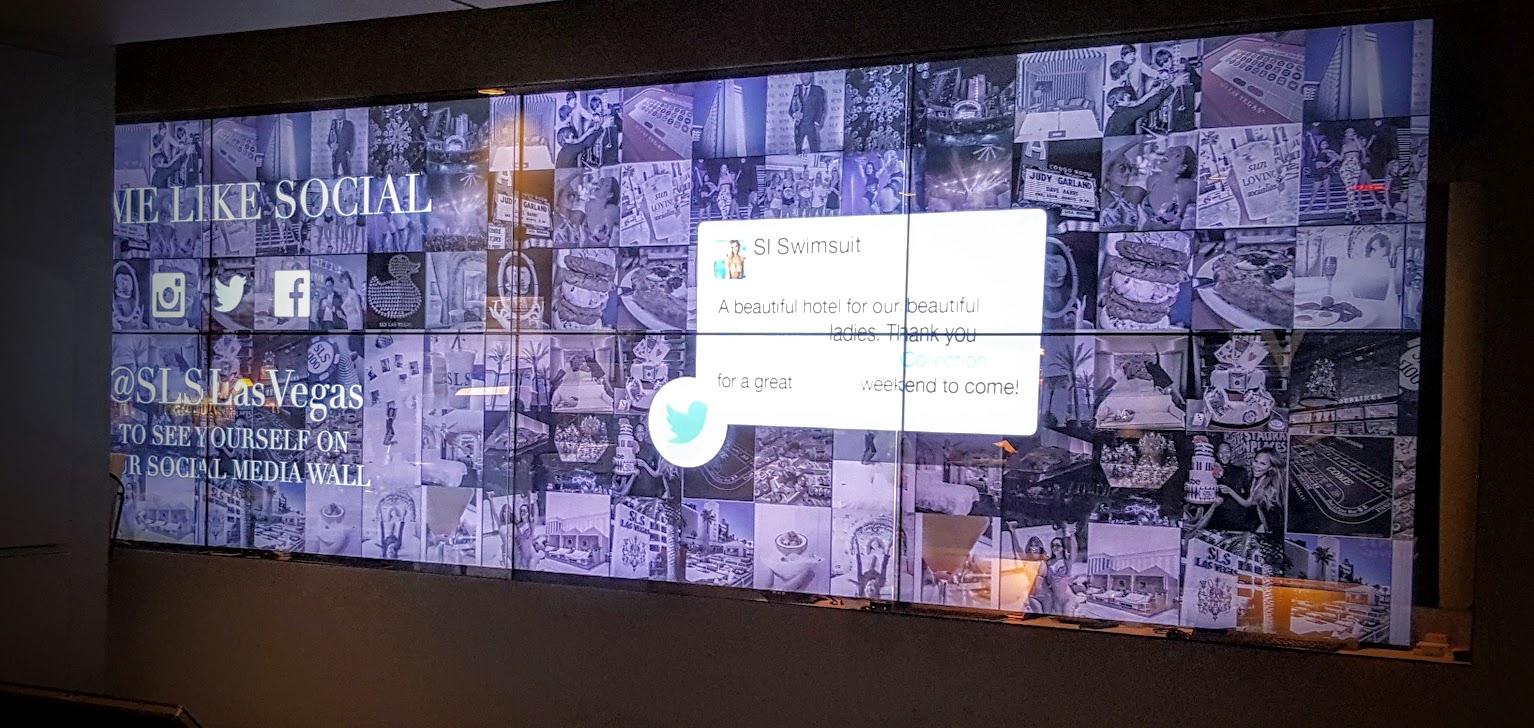
Social media can be a great resource for fresh, interesting, funny and highly visual content for digital signage screens, but there’s a lot more to it than pointing your content management software at a web address or hash tag.
End-users need to think and plan out their social media strategy, find the right resources, identify the right tools, and ensure what they’re up to won’t end up requiring legal advice.
Social media is amazing. It’s also a bit of a swamp. Done wrong, it can be a messy swamp that’s hard to crawl out of to more solid ground.
For success, you need good monitoring, moderation and presentation tools, a set of trusted, quality content resources, and a clear understanding of usage rights for content and the intellectual property status of the toolset being used.
Toolsets
There are numerous tools out there – everything from gadgets supplied by the social media companies to pure play firms that are partially or totally focused on toolsets that help customers organize and visualize user generated content.
Here are some of the top options out there, in no particular order:
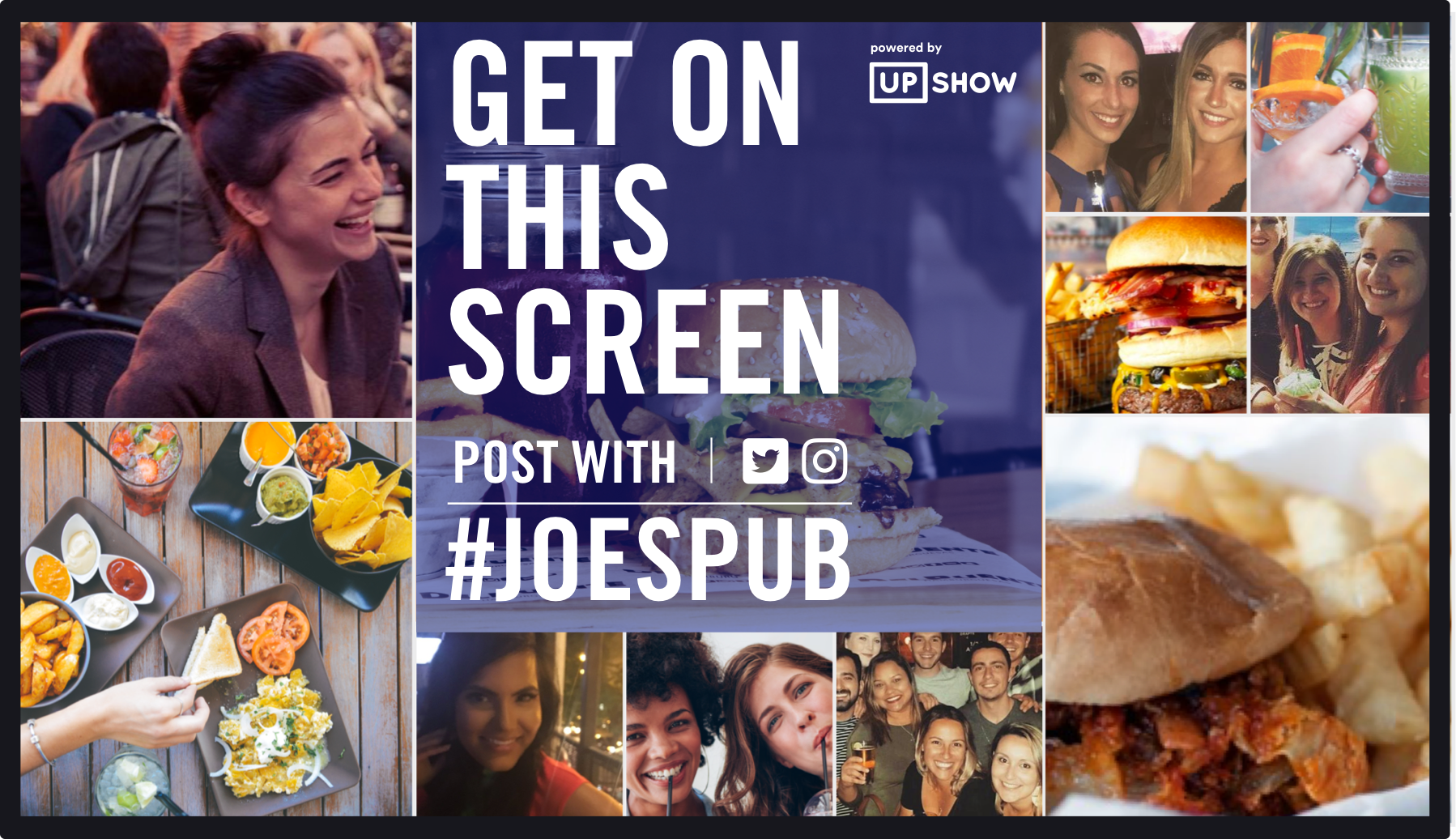
Upshow
Chicago-based UPshow is social TV platform that aims to change the way businesses do TV. Its core feature is a fully branded user-generated content showcase that boasts real-time, human moderation. Customers can customize their UPshow screens to showcase marketing materials as well as select from a wide range of entertainment options such as games, trivia and video channels. UPshow also has a growing list of partner integrations, such as Pluto.tv for TV channels, Scorestream for live sports scores, Accuweather for weather and TouchTunes for music.
UPshow is powered by Google Chromebit and can be fully managed via the cloud from any device.

Postano
Portland-based Postano – recently acquired by Sprinklr – does what it calls social media visualizations, as part of a suite of software services that range from aggregation and curation to monitoring and analytics.
Visualizations are fully customizable – meaning end-users can employ branded fonts, type treatments, preferred color palettes, and visual conventions that mesh with the needs of brands to create a unique experience that resonates with your fans and your brand.
Postano will be sync’d up with Sprinklr, which has a social experience management platform.
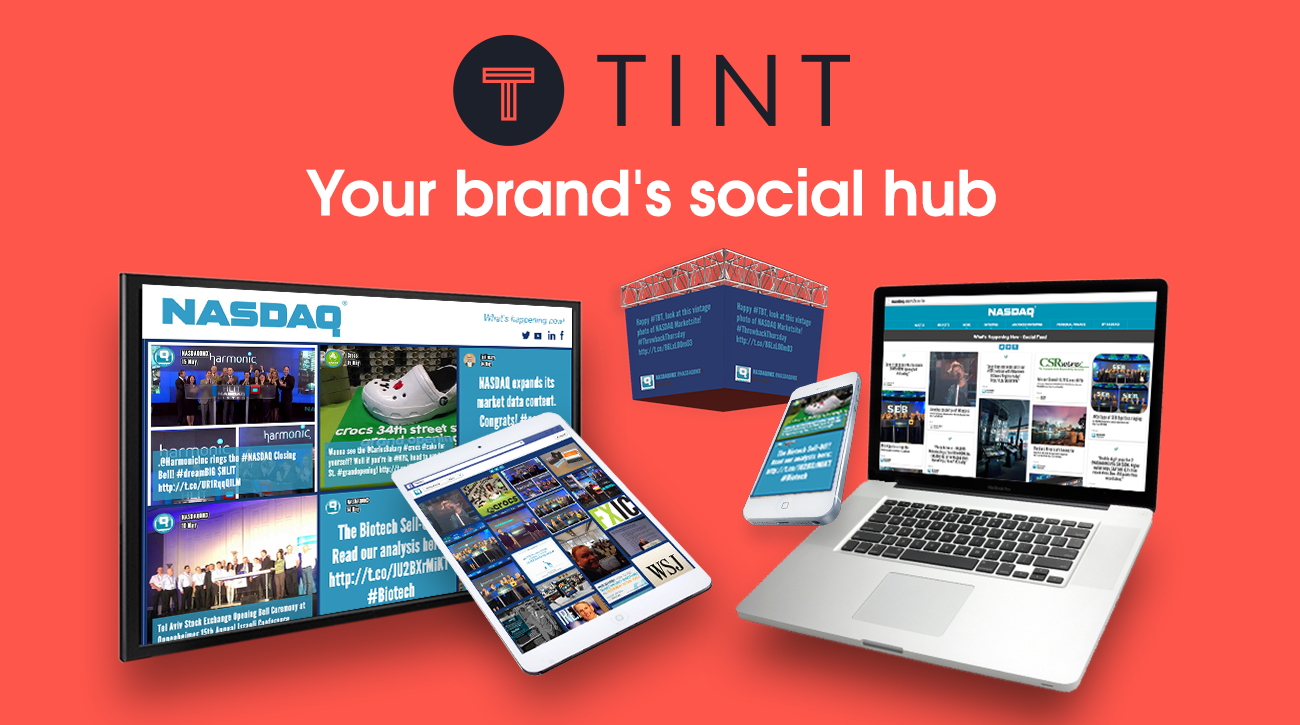
TINT
Based in San Francisco, TINT describes itself as a social media marketing platform that connects brands and fans into one social hub. Those hubs can live on-site or anywhere else with a screen, like mobile, digital advertising, TVs, interactive displays, digital billboards, and big LED boards.
TINT highlights its user generated rights toolset, that makes using content from third-parties fully legal and easy, saying customers use TINT to pick the content they like, customize terms and conditions, and send the a usage request with one click. The original content owner just responds with #yes and the content is cleared.
Among these companies, TINT is the only one (we think) that has done a deal with the firm that holds patents for social media patents. More on that below.
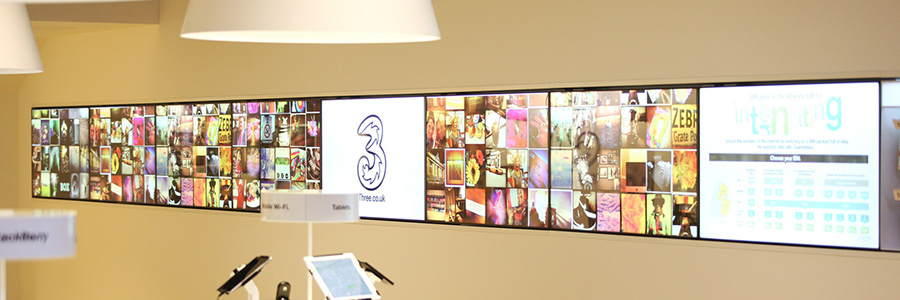
Miappi
Based in London, UK, this company lets users design, curate and moderate social content and #hashtag-based user generated content on any display, including digital signage and digital OOH screens.
The service has a variety of plan structures and some of the highlighted features include the ability to geo-fence content so it is relevant to the location, as well as capability to add calls to action to posts.
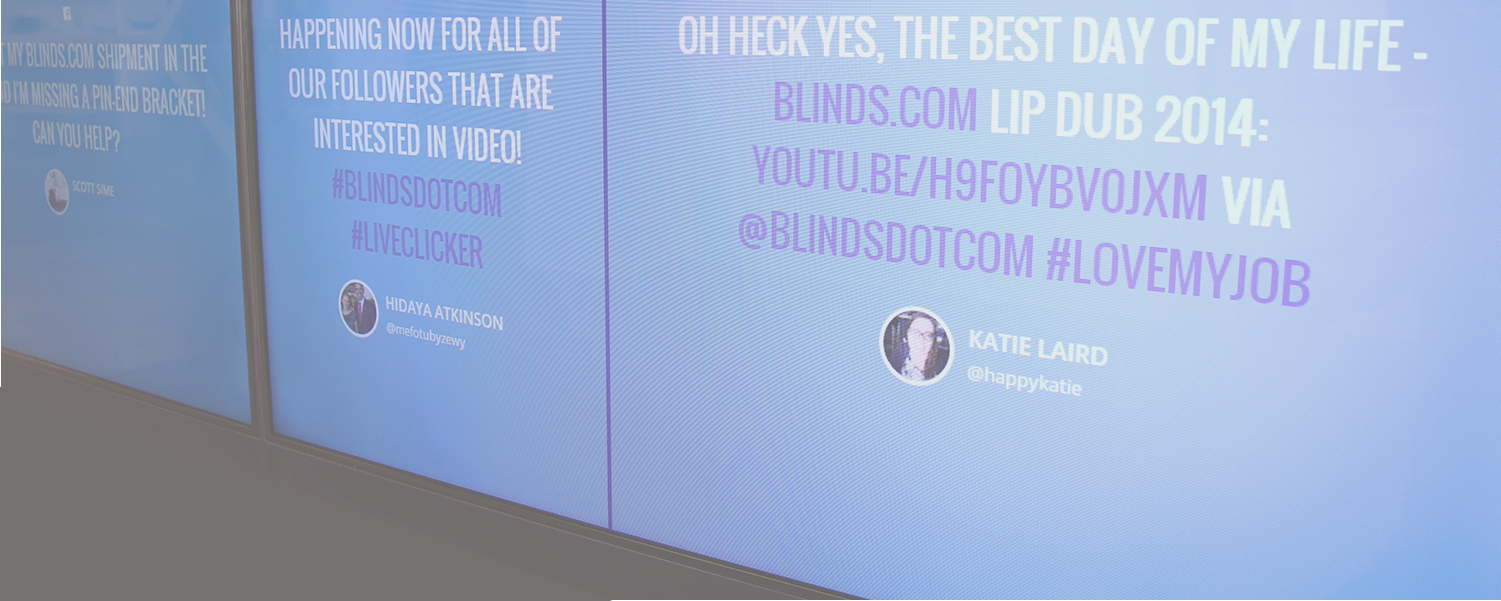
Zoomph
Reston, VA-based Zoomph says it collects, classifies, and activates information instantaneously to amplify digital marketing and understanding. Its toolset lets clients monitor, analyze and establish trends on what’s coming out of social media channels.
It has a user generated content toolset for visualizing material on event-based or permanent, fixed displays, and the tools include moderation.
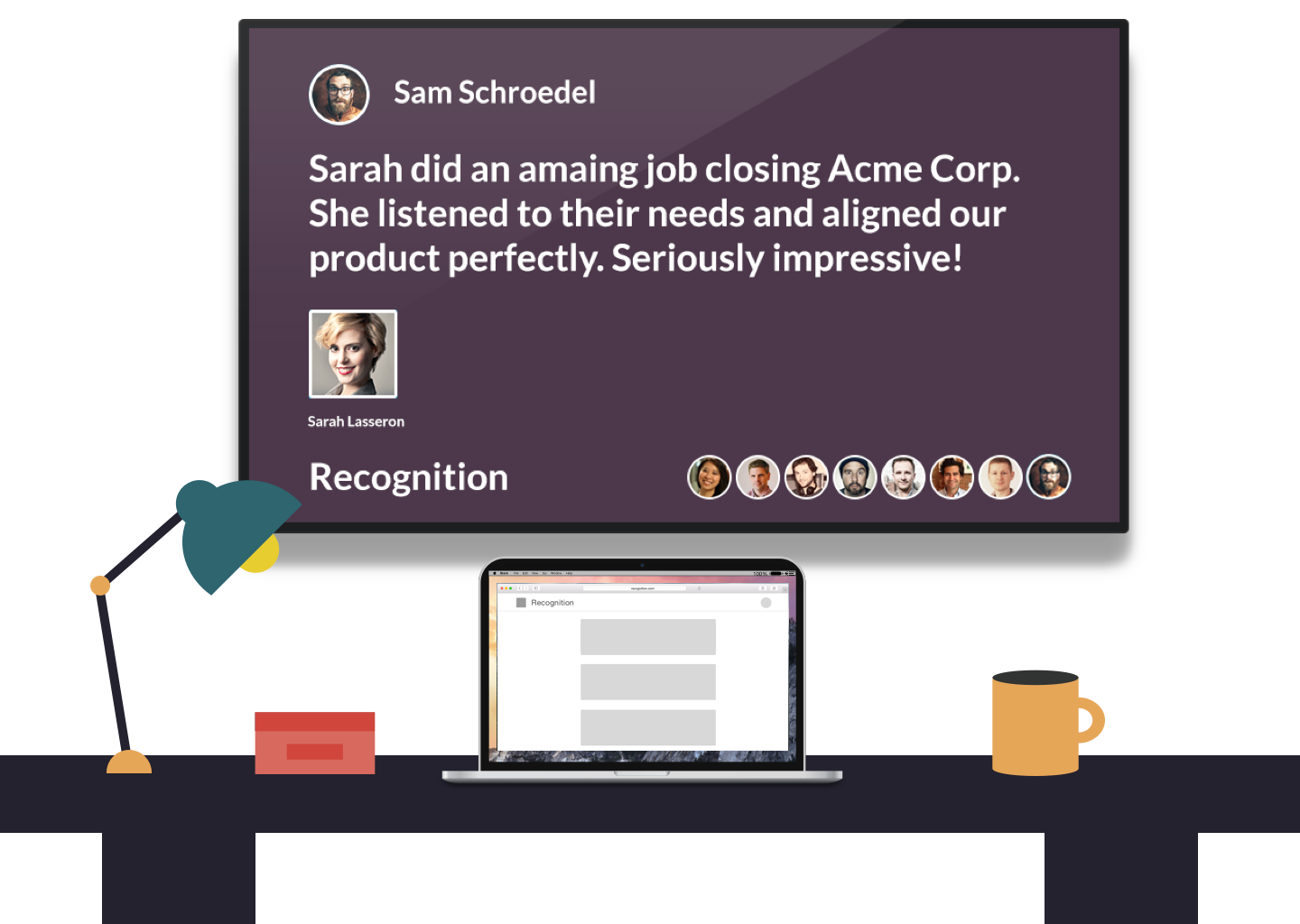
PropsBoard
Philadelphia-based PropsBoard does a very different form of social media visualizations – focusing on internal communications and specifically on employee recognition product. Their toolset hooks into platforms and pushes content to screens that is all about celebrating jobs well done around the workplace.
The company sells this as a service, using either a Chrome app or custom URLs. In all, PropsBoard has apps for Slack, GitHub, GitLab, Zendesk, PagerDuty, Salesforce, Twitter, Instagram, web page display, image display, and weather.
Screenfeed
Minneapolis-based Screenfeed is well-known and established in the digital signage ecosystem as a top provider of subscription content services, such as news, weather and sports feeds. But the company also has social media apps that are sold on the same subscription basis.
Screenfeed’s Social Apps Dashboard gives users complete control of every post displayed on their screens. They can select from Twitter, Instagram and Facebook, or even combine them. There are rules for filter content, as well as an optional human moderation tool. Users also get tools to customize the look and feel.
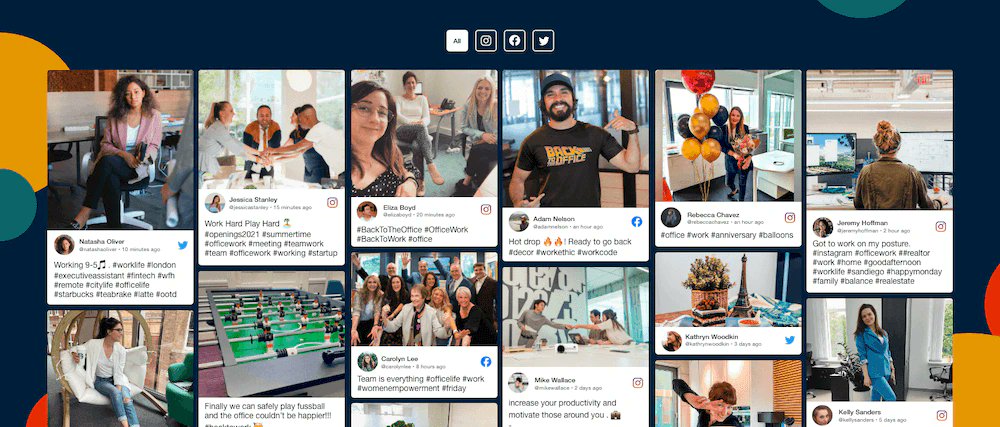
Taggbox
Taggbox is a user-generated content platform that helps marketers to build trust, increase user engagement, and grow conversions. The company provides solutions to curate UGC from social media platforms and display it across different marketing channels like websites, events, digital outdoor advertising, email, social ads, etc.
As a UGC Platform, Taggbox helps brands to make their marketing more humanized, interactive, and authentic for their users. From building trust with website UGC galleries to engaging your event audience or even selling your products with Shoppable UGC, everything is possible with Taggbox, says the company, which is headquartered in California, with a branch office in India.
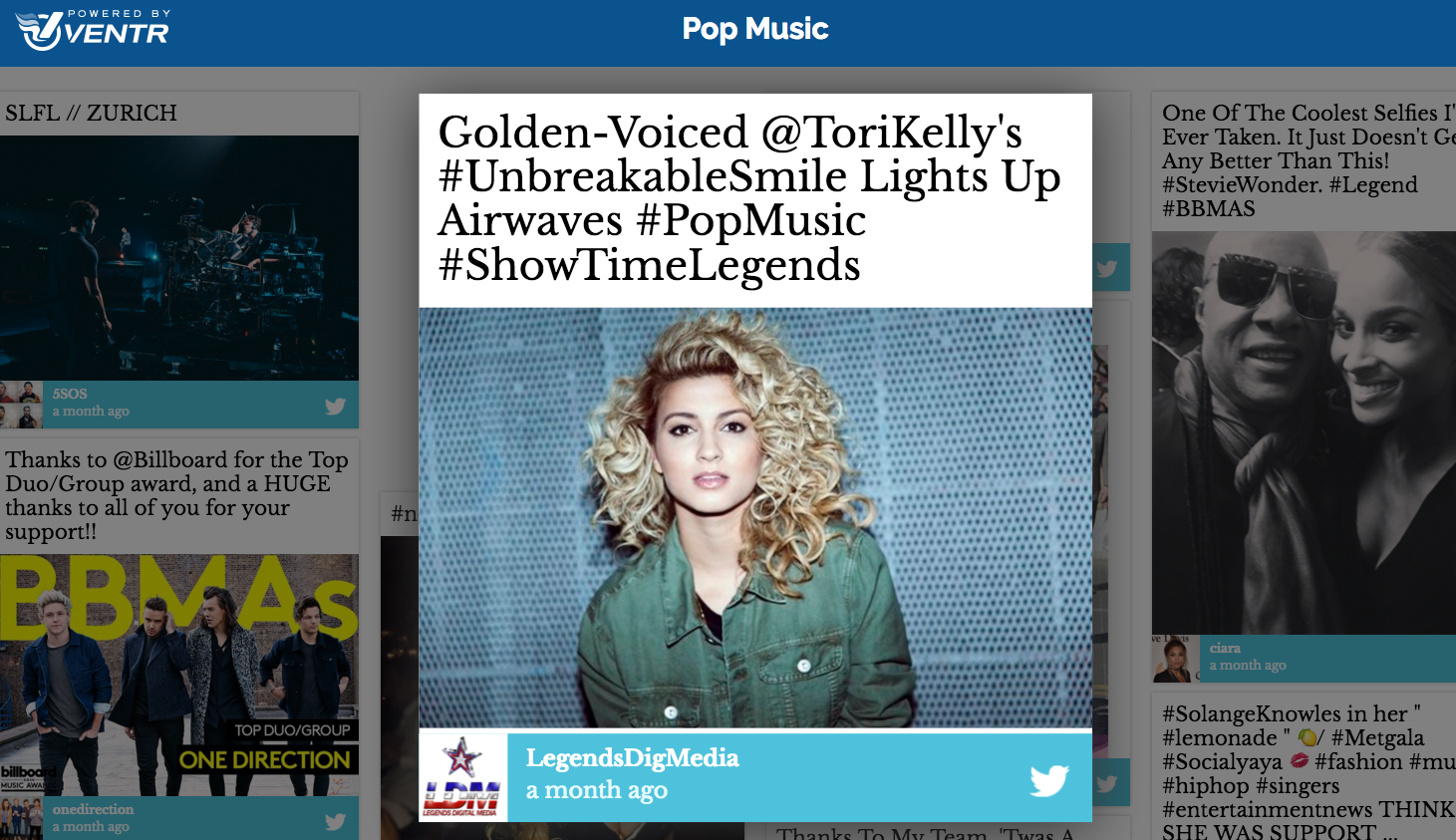
Ventr
Ventr is a platform that features professionally curated and moderated social media feeds (Vents) that can be displayed on digital signage and digital out-of-home media screens for free.
Ventr uses a team of social media editors who curate the best and most relevant content from Facebook, Twitter, Instagram, and Vine. End-users can cChoose from a collection of professionally moderated Vents that span a range of topics and themes, including World News, Pop Culture, Sports, Technology, Travel, Photography, Music, and everything in between.
Digital signage and digital out-of-home media operators can utilize the free Ventr social media aggregation, curation, and visualization tool to create their own unique social media feeds. Ventr offers a robust set of features, including access to an intelligent social media database to find the best accounts and hashtags to include in a feed, the ability to add custom content to a Vent, and the functionality to remix pre-moderated Vents into an entirely new social media feed.
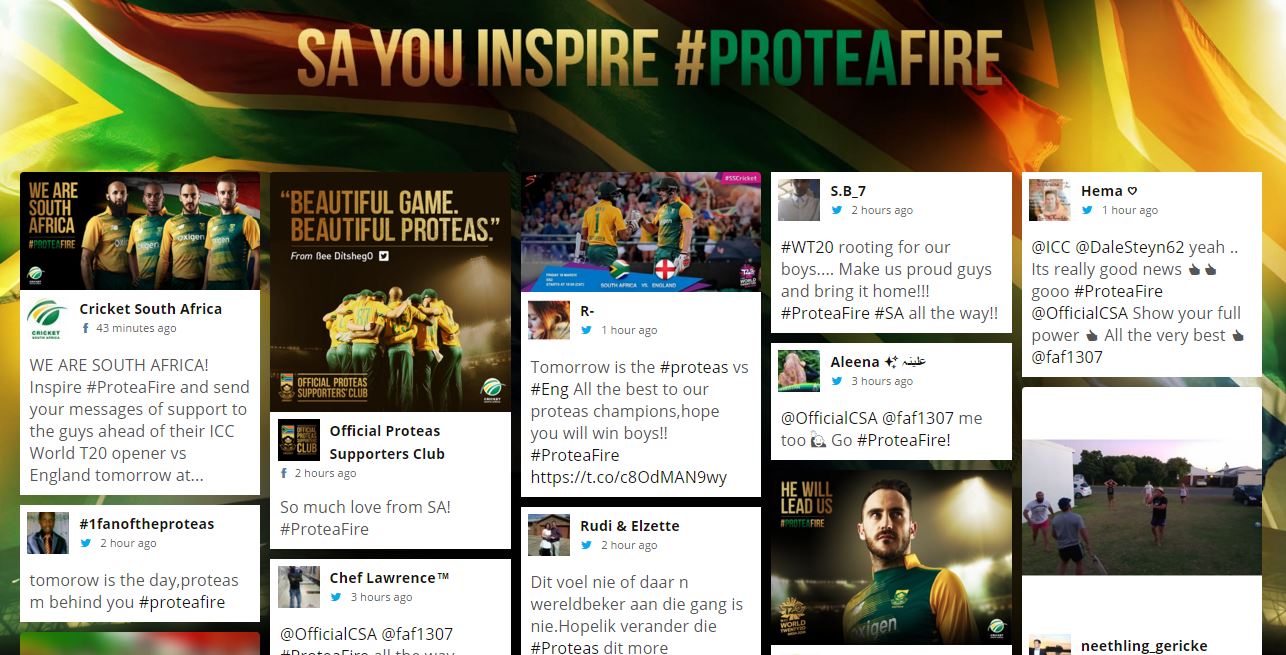
Strea.ma
New Zealand’s Strea.ma lets customers can create their own personal real-time streams of social media content, for live events like conferences, concerts, and sports events, or in business environments.
With Strea.ma, users can automatically bring updates from multiple social feeds – including updates, conversations and images – into one easy-to-use management system. The platform includes profanity filtering.
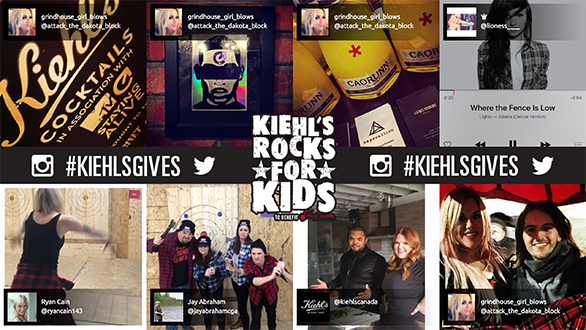
Wallrus
Montreal firm Orangerine markets Wallrus, which combines a Twitter and Instagram Wall with a digital signage platform in an easy package that can be set up online in a few minutes, and then served to an unlimited number of screens.
Wallrus includes design tools, pre-designed templates and themes, and robust moderation tools. The company is focused on events.
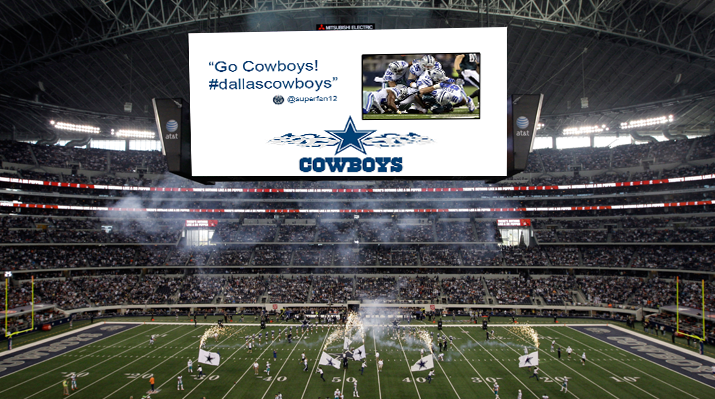
CrowdScreen
London, UK-based CrowdScreen is a cloud-based platform that displays an audience’s messages, photos and video at any event – on any screen. The platform is aimed at special events and sports, but is also marketed for permanent use. It is integrated with Twitter, Instagram. Vine and Facebook, and has additional features like Q&A mode for audiences, moderation tools and SMS support.
The platform also allows for customization and offers live stats.
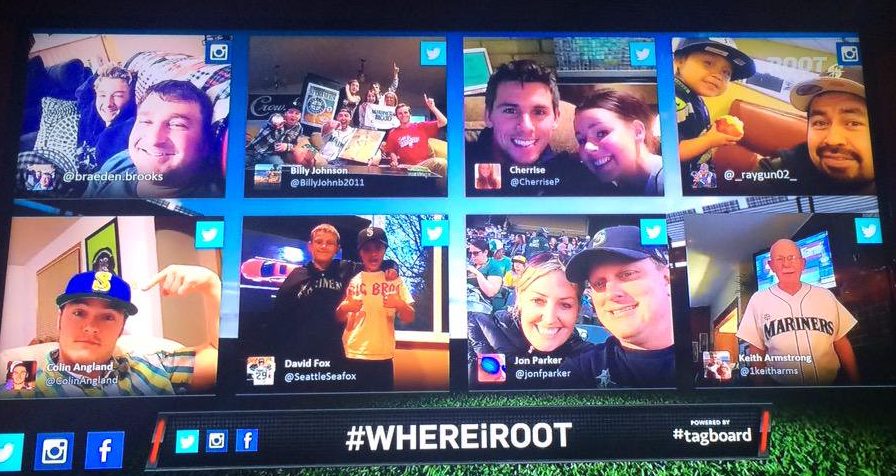
#Tagboard
Seattle’s Tagboard offers a toolset thatTagboard uses hashtags to search for and collect public social media within seconds of being posted to networks like Twitter and Facebook. Robust tools offer the power to moderate and select specific posts to feature on websites, in broadcast TV, and on large displays.
The company appears to be heavily-focused on empowering events, like company meetings and conferences.
Digital Signage CMS Companies
Numerous content management system (CMS) software companies have written dedicated applications, widgets, gadgets or whatever you want to call them that can ingest and present social media feeds, from Tweets to Instagram pics. In most, if not all cases, they come with the core software or are sold as accessories or enhanced functionality. Some have moderation tools, while others just take and then present the posts.
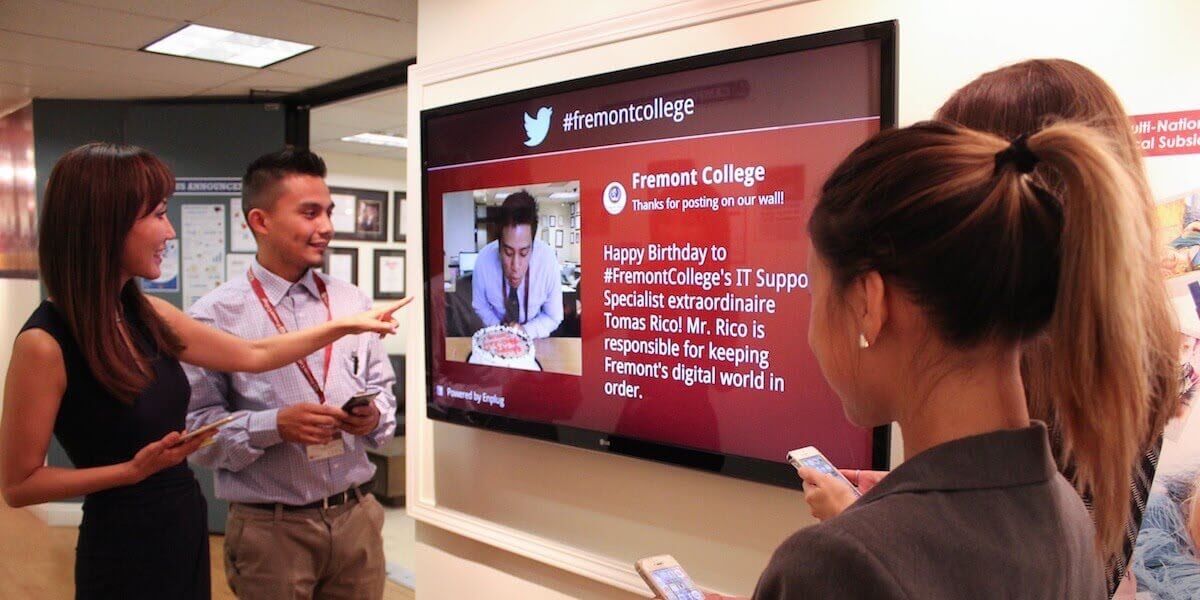
Of the many, many CMS companies, LA-based Enplug is arguably the most social media-centric of the crowd, with auto content filters, analytics and the ability for client users to respond to messages – favorites and replies – within the app.
Some of the very large players like Four Winds Interactive also have social media functionality.
The Content Firehose
Social media looks like this amazing river of free content that just keeps gushing fresh new posts and images. But here are the problems with that:
1 – A lot of the information from hashtags will be repetitive, incomplete, poorly worded or irrelevant
2 – Some of the content will be awful in some way or another. Offensive. Misogynist. Inflammatory. Libelous. Or just plain wrong.
If an end user just sets up a hashtag filter that skims up everything that moves that includes that hashtag, that means everything with that hashtag will find its way to screens. It’s inevitable that bad stuff will show up, and that someone will make it his or her mission to put something awful on that screen – to be vindictive, or just for giggles.
There are auto-moderation tools and filters from some providers that make it tough for monkey business to be successful, but they’re not infallible. One bad tweet or photo can sink a career, or maybe even a company.
The easy workaround is to just include one handle, or a select few trusted resources, but things like Twitter walls from retail banks, that only have bank-generated posts, tend to be about as exciting as watching competition knitting on TV.
Doing social media well in digital signage usually requires human moderation, either by dedicated teams or by third-parties. The best stuff tends to happen when a dedicated person (or persons) spends workdays scouring the various social media channels and highlighting the best stuff – funny tweets, great photos, amazing short videos and quirky animated gifs. They’re behaving as editors, and good ones can really build up a solid stream of eye-catching content.
But … and it is a big but … human moderation means more resources and money put to the network. The paycheck for great curated content might, however, be less costly year to year than creative produced at far less frequency by an external agency.
Patent Issues
Chances are, whatever software or service or method you develop and deliver today at least looks and seems like something done previously by another company.
That’s the case with social media visualizations that are pushed to public-facing screens. A company called LocaModa, in the mid-2000s, started pushing user generated content to digital signage and digital OOH screens – selling it as a service, and including such options as human moderation.
That company sought and received patents on its methodology, and since it was acquired by a larger firm, Monster Media, it has been asserting its intellectual property. It has been asking for licensing fees from companies that it says are doing essentially what LocaModa patented. In some cases, Monster is filing lawsuits.
Some companies, like Tint, have opted to settle. Others, like Enplug, say they don’t believe what they do infringes the patents.
Whatever the case, my advice would be to ask your service provider its point of view and status with respect to patent issues. There is no indication that, in this case, end-users are directly affected by these disputes. But in other digital signage software patent disputes – involving non-practising entities aka trolls – the lawyers have gone after the end-users as a way to coerce settlements from the software service providers.
For a great discussion about this, listen to this podcast episode with LocaModa founder Stephen Randall, who now works with Monster.
Content Rights
Just because it is live on the intertubes doesn’t mean all content rights are surrendered. It’s more complicated than that, particularly when it comes to images.
Tint has a very good primer up on its website on user generated content rights and permissions that is worth a read. It gets particularly thorny if a re-purposed post or image is used by a brand to help market a product and generate revenue.
It doesn’t, at all, mean, social media cannot be used. It just means it’s not the wild west.
What Are You Trying To Do?
Ask yourself, and ask your colleagues, why social media posts are being considered as part of the content mix on your digital signage screens.
Is social just seen as a cheap, steady source of fresh content? Or is there more to it?
Are you trying to better connect with your customers? With your employees?
Are you celebrating great work done in your community, in your venues?
Ask and answer the question Why? And then answer What sources would be used? Who will manage them? Where social messages should appear? And when they should run?
You want to have a clear sense as to why social is part of the content mix, and when and where it is best used. If social is just seen as a way to keep the screens fresh with content – with no real strategy about the content – have a rethink.
And do your research on best practises and legal implications.
Social media can really work in digital signage, but there’s a lot more to it than pointing at a hashtag or handle.



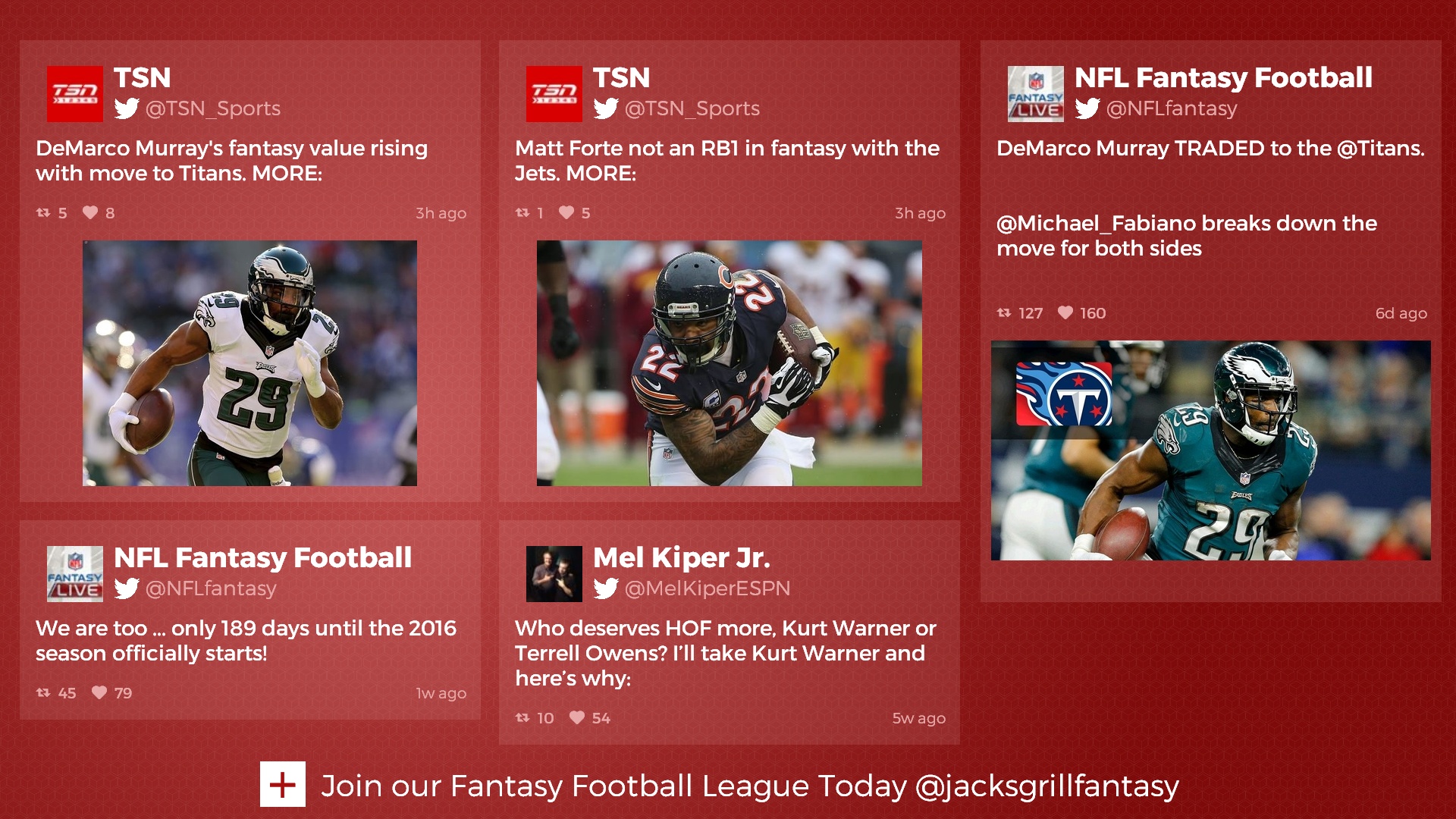

Leave a comment